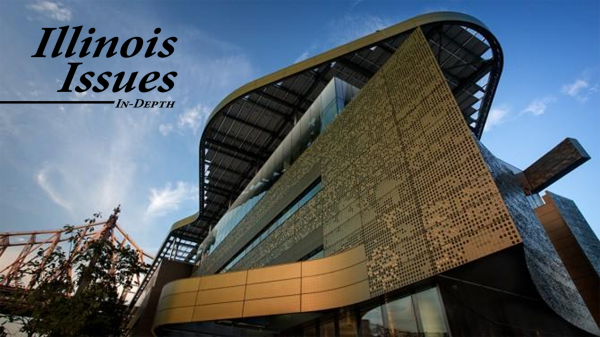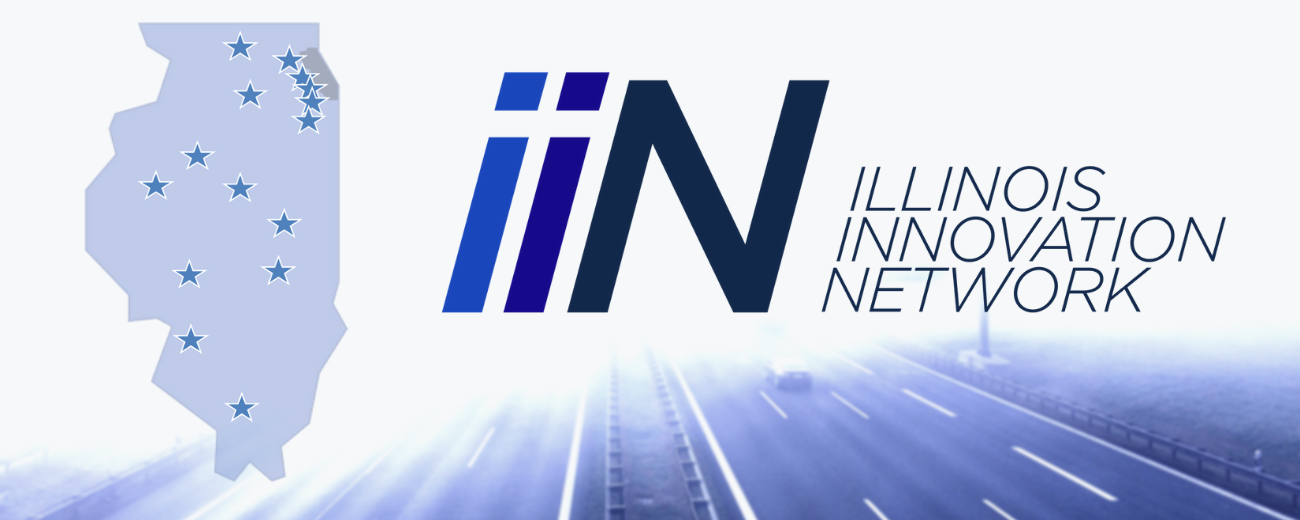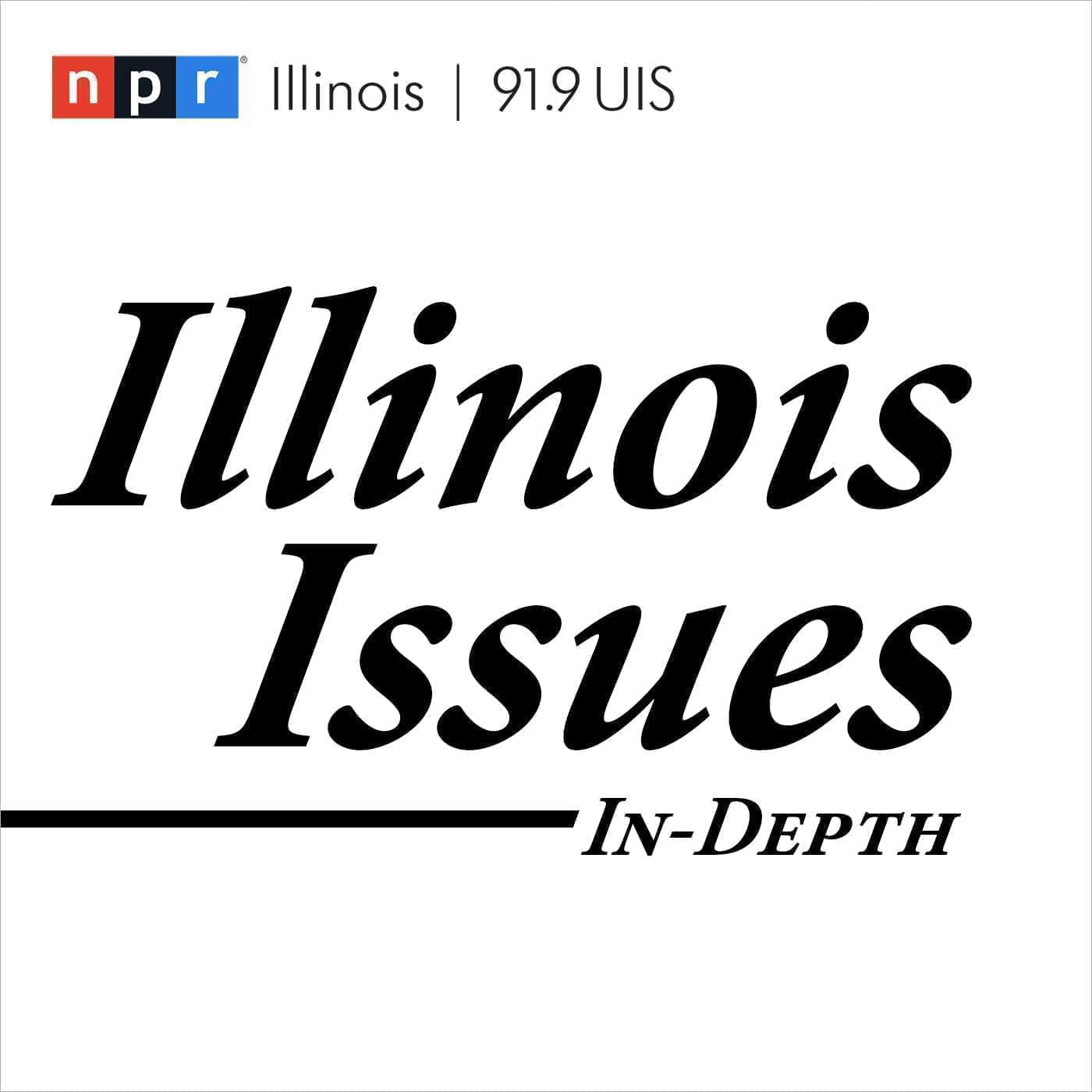Illinois Issues: U Of I Divvies Up $500M Innovation Pie

U of I officials plan to make their new Chicago tech hub, Discover Partners Institute, as architecturally "iconic" as Cornell Tech Lindsay France/Cornell University
Most press conferences don’t provide breakfast pastries. But in mid-May, when the University of Illinois announced that every public four-year college in the state had signed on to its Innovation Network, the event was staged with some extra sizzle. Along with muffins, coffee and juice, there was a line-up of college presidents and chancellors, plus Springfield mayor Jim Langfelder, flanked by a big banner showing 15 stars strewn across the state of Illinois.
Each star represented a “hub” in the Illinois Innovation Network — one for each of the U of I campuses (including its medical schools in Rockford and Peoria), the two Southern Illinois University campuses, the seven other public universities, and Discovery Partners Institute in Chicago — a proposed collaboration center, still in the planning phase.
Just two things were missing from the press conference:
Most immediately noticeable was the lack of a microphone, which meant the Innovation Network was, ironically, announced acoustically. The other was any specific information on how much financial support each “hub” would receive out of the $500 million in state funds appropriated by the General Assembly.
That map with the stars — used on much of the Network’s branding, and in presentations to lawmakers securing funding — makes each hub appear equal. And in some regards, they are. But when it comes to allocation of the half billion dollars in initial state funding, they’re anything but.
Ed Seidel, the U of I vice-president for economic development and innovation and one of the main framers of the plan, says “roughly half” of that $500 million will go to DPI. The U of I’s Chicago campus and its flagship in Urbana-Champaign will each get approximately $100 million, he says. So with $450 million earmarked for the U of I, that leaves a relatively small amount tithed to the remaining dozen universities.
“We did carve out 10 percent of this money for other public universities,” Seidel says.
Northern Illinois University — the first non-U-of-I institution to sign on to the deal — will get $15 million. But most of the downstate hubs are still waiting to hear what portion of the remaining $35 million they’ll each get. At the University of Illinois Springfield, the fate of the “Y block” is caught up in these negotiations.
Yet with the bulk of the state funding going to Discovery Partners, there’s still some confusion about what exactly it is. Envisioned as a single building, it’s not referred to as a campus. Since it’s an institute rather than a school, it won’t grant degrees. Students and faculty from partner institutions and other hubs may spend significant time at DPI, but they will remain enrolled at or employed by their original schools.
At Western Illinois University, Joe Rives is the IIN liaison and senior vice president for strategic planning and initiatives. He views DPI as simply the first hub of the network.
“The key is DPI is just one of 15,” he says.
WIU plans to use whatever state funds it receives through its membership in Illinois Innovation Network to bring more engineering jobs to the Quad Cities and increased internet capacity to rural areas, Rives says.
Leslie Roundtree is the IIN liaison at Chicago State University, where she’s also interim provost and senior vice president for academic affairs. Her proposal for IIN funding included renovating one entire floor (5,000 square feet) of Douglas Hall to make an innovation lab plus a center for solutions for urban populations, with a focus on the social determinants of health. That list includes violence reduction, conflict resolution, urban farming, effective law enforcement practices in an urban setting, police relationships, and pathways for success for challenged youth and ex-offenders.
"We already have work being done by some of our faculty in these areas," she says.
But when asked to describe DPI, she hesitates.
“Well, that could be a little tricky,” she says. “Discovery Partners Institute is a U of I conglomerate, and that’s about all I can tell you about it.”
To Seidel, on the other hand, DPI’s mission seems obvious. He sums it up as a high-tech “environment that brings together every university in the state and major universities around the world to work with companies to enhance what they can do, and to increase entrepreneurship, and increase more companies in the state… things like that.”
Collaborations among higher ed institutions, especially involving tech, have been popping up since at least the late 1950s. That’s when Duke University, North Carolina State University and the University of North Carolina at Chapel Hill formed Research Triangle Park, which is one of the models Seidel points to it as an inspiration for DPI. The main model for DPI, though, is the Cornell Tech, a graduate school for business, design, law, and technology, located on Roosevelt Island near Manhattan.

IIN's logo shows a star positioned on a map of Illinois to represent each of the 15 "hubs."
The two projects have vastly different origin stories. Cornell Tech was the result of a competition announced in 2010 by New York City’s then-Mayor Michael Bloomberg, who offered $100 million plus free land to the university that could come up with the best proposal for an applied sciences center to lure tech minds to the city. Fifteen universities — including Cornell, Stanford University and Columbia University — submitted proposals. News reports say Stanford was frontrunner until Cornell teamed up with Technion-Israel Institute of Technology.
The U of I hasn’t had to compete against any other higher ed institution to win its $500 million in state funds. Consequently, school officials have been able to pitch their proposal using fuzzy terms that have no scientific definitions and promises that aren’t yet committed to paper. For example, even though DPI is set to receive more than $250 million, no governance structure plan has been submitted. In April, when the Academic Senate at UIUC voted to approve DPI and IIN, the News-Gazette reported that, “Several senators had expressed concern about the ‘relatively vague details’ of the proposal early on, with one calling it ‘quite surprisingly undercooked’.”
But while Bloomberg guaranteed land for the winner of his competition, the U of I can’t be expected to finalize its DPI plan until agreements are reached with and among the City of Chicago and Related Midwest — a development firm that owns 62 acres of prime downtown real estate. Related Midwest wants DPI to anchor a new neighborhood dubbed The 78, and will donate the land.
That plan began three years ago, at a time when Chicago was one of the 200-odd cities across North America hoping to woo Amazon’s HQ2, and having a tech hub like DPI was seen as a way to enhance Chicago’s chances. That instinct wasn’t wrong: When Amazon eventually chose a pair of sites, Long Island City was one of them — thanks in part to its close proximity to Cornell Tech. But after protests from the residents of nearby Queens, who didn’t believe they’d get any benefit from Amazon’s $3 billion tax break, Amazon pulled out of New York.
The 78 has sparked a somewhat similar controversy. Located near Pilsen, Chinatown, Bronzeville, UIC, and Michigan Avenue, it would have 10,000 residential units, only 500 of which would be classified “affordable.” Related Midwest asked Chicago City Council for a $700 million tax break known as tax increment funding, and when it was approved in April by a lame-duck panel, six incoming council members joined a group of citizens in protesting the TIF.
Quieter protests appear to have been registered by two UIC profs who were part of a group of more than a dozen faculty members studying the “culture and society” implications of DPI. Both people of color, the two professors withdrew “based on deepening concerns around lack of diversity in DPI organizational structure and process; and DPI’s potential negative impact on Chicago communities,” according to a footnote on the report. Contacted by Illinois Issues, one professor said she withdrew simply because she didn’t have time to participate; the other said he had no comment.
Their objections didn’t sway Seidel.
“Universities have lots of faculty with lots of different opinions, and I wouldn’t be surprised if there were a few faculty here and there who have different opinons about a particular report,” he says. “So I think it’s just something like that.”
Despite confusion, second looks and the quiet protest, the U of I’s DPI/IIN proposal appears to have earned green lights from all decision-makers. Two different sessions of the Illinois General Assembly have approved the $500 million appropriation, which has been signed by two different governors. Gov. J.B. Pritzker asked the universities to come up with matching funds, and they’ve generated over $190 million so far, Seidel says. He has tallied another $240 million from venture capitalists, OSF and other donors. DPI has also inked collaborative partnerships with Northwestern University, the University of Chicago, Tel-Aviv University and Hebrew University in Israel, Cardiff University in Wales, and Ramaiah Medical College in India.

As for the downstate public universities, set — so far — to receive just a fractional piece of the state funding pie, they’re still happy to be included, Seidel says.
“It’s not a zero-sum game, it’s not a set pie,” he says. “We’re growing the pie because we’re working together.”
